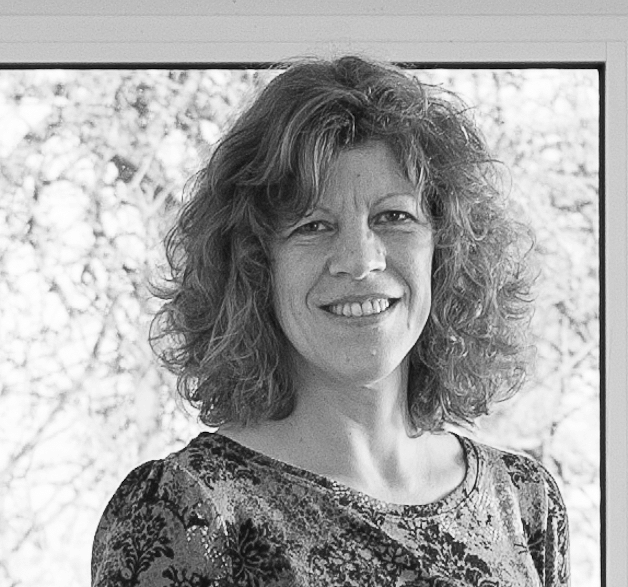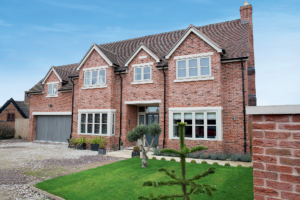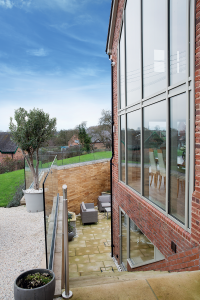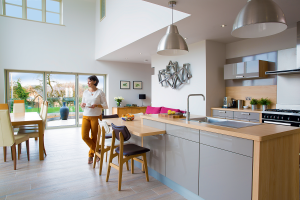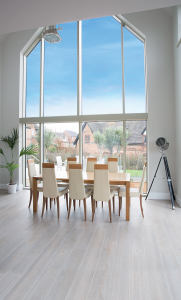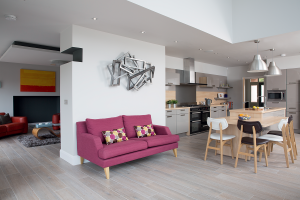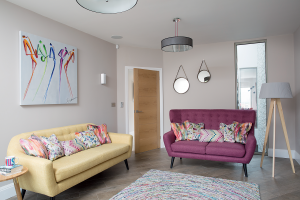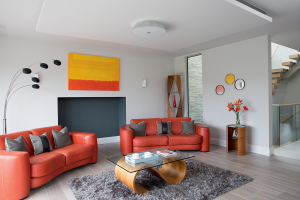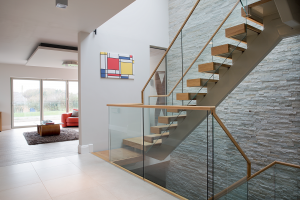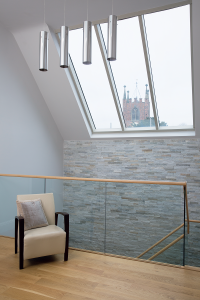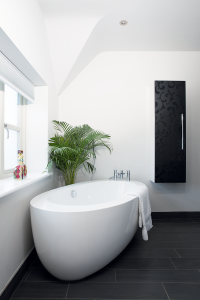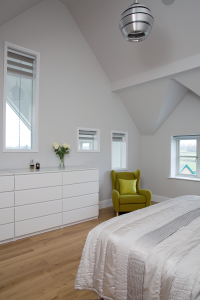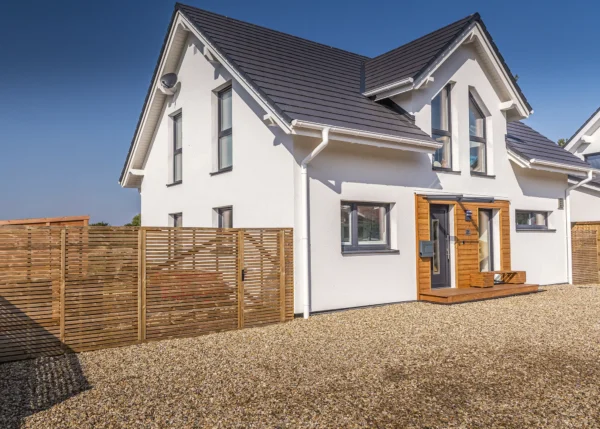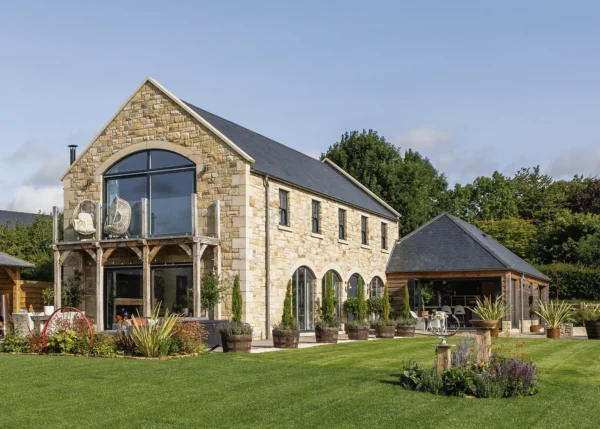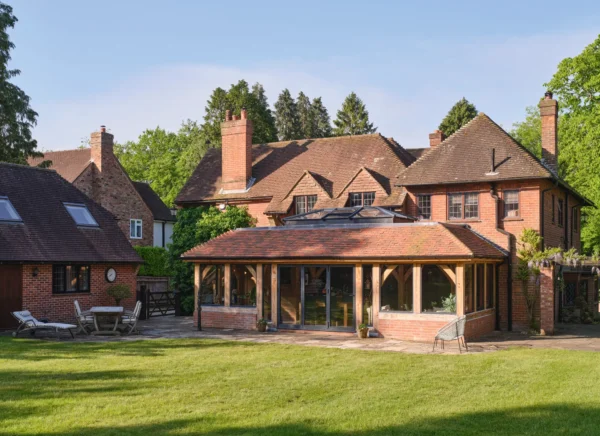Light-Filled Modern Home
Jo and Wayne Dennis were serial renovators, making major upgrades to every house they’d lived in, but the couple had always wanted to build their own home. “The problem was finding the right plot,” says Wayne. “There were plenty of small infill sites around in Staffordshire, but we wanted something with a great outlook and were keen to stay close to our children’s school. Our most recent project was to revamp a ’60s property in a nearby village – but we kept our eyes and ears open for an opportunity to start from scratch.”
“The setting we particularly liked was in an elevated position but completely overgrown,” says Wayne. “We put in an offer straight away, which was accepted, and then went back to the drawing board to submit an application for a new, more radical design.”They couldn’t believe their luck when an ideal plot came up for sale in the next village along. The site was right in the heart of the community and the owner had obtained planning consent for two houses on it, with the rest becoming common land for the village.
New for old
The couple turned to Aaron Chetwynd Architects, who they used when extending their last house, to come up with a design that would present a traditionally-inspired frontage to suit the street scene, but with a modern glazed look at the rear of the property.
- NameJo & Wayne Dennis
- LocationStaffordshire
- ProjectSelf-build
- StyleContemporary
- Construction methodBrick & block
- Plot cost£165,000
- House size470m²
- Build cost£450,000
- Total cost£615,000
- Build cost per m² £957
- Construction time18 months
- Current value£850,000
They envisaged an elevated terrace, sunken courtyard, double-height living areas and open-plan living on the ground floor. “We engaged with Staffordshire planning authority from the outset and they were very receptive to our ideas,” says Jo. “We communicated with them right the way through the process and it took about four months to get the changes passed.”
With planning consent granted in May 2012, Jo and Wayne sold their existing house and moved into rented accommodation nearby so they could free up money for the works. They employed local builder Matt Farmer, who came highly recommended, to undertake the main construction phase.
Above & beyond
The excavation of the site was the first – and most challenging – part of the entire project, involving the removal of over 1,000 tonnes of soil.
With the soil carried off-site, the resulting 4m-deep hole was ready to accept the foundations and basement. Around 500 tonnes of concrete was poured – much of which went into the retaining wall, which was shuttered with a metal framework and subsequently back-filled.
The whole subterranean structure was lined and sealed both inside and out with a waterproof membrane. “We went way over spec with this to make sure it was completely watertight,” says Wayne. “It meant this part of the build took about four months in total, but if you cut corners at this stage it really can come back to bite you.”
Above ground level, the scheme progressed fairly swiftly. “Matt was brilliant – he went the extra mile in helping us to visualise everything,” says Wayne. “For example, when we were struggling to decide which brick to use and the right hue for the mortar, he created mini walls so that we could see how they worked together.” The couple ultimately selected a 65mm Meales blend from York Handmade’s Old Clamp range, which complements the local brick.
Wind & rain
The huge gable-end window at the rear of the house is so big that the individual panes had to be specially made to withstand the wind in this relatively exposed location. “It was a big challenge getting the glazing produced,” says Wayne. “We didn’t want a support bar across the top of the triangle as we thought this would spoil the look. The extra strength glass has allowed us to achieve the effect we wanted.”
The masonry construction is reinforced with steel framing and beams, so there are no internal structural walls. This is complemented by the open roof structure, created using trusses that were made to measure as the build progressed. The roof is double-pitched, with a flat central section that’s hidden by the sloping lines (a single pitch would have made the building too tall).
Unfortunately, soon after the main construction phase was completed, the couple received some devastating news when their builder, Matt, was taken seriously ill and died quite suddenly. “We had got to know him really well and counted him as a friend,” says Jo. “On top of that, he was an excellent builder and very easy to work with. It was definitely the lowest point for everyone.”
Moving forward
Despite this blow, the project had to get back on track. The modern edge runs into the internal decor, furniture and fittings. The kitchen was the biggest challenge. The couple knew early on that they wanted a central island and plenty of storage, but most of the kitchens they really liked were way over their allocated budget.
Having allowed plenty of time, and kept their options on suppliers, their patience eventually paid off. The couple found a display kitchen at a Kutchenhaus showroom that was available for just £6,000 providing they took it as-seen and could collect within two days.
“It was a once-in-a-lifetime bargain,” says Jo. “It came with the cooker, fridge-freezer and washing machine – plus enough fittings to kit out the utility, too. It probably saved us around £20,000.” To fit the units in, they had to adjust the position of a partition wall between the kitchen and the sitting area, but it was a small price to pay for such a huge saving overall. The pair stored this and the furniture from their last house in their garage until they were able to move in.
Meanwhile, the rest of the fit-out work marched ahead – including the installation of renewable tech, such as the rainwater harvesting system and an air source heat pump. The latter provides such strong performance that they decided against installing solar panels, too.
Jo and Wayne are delighted with their new home, which they moved into in April 2014. “At first it felt like we were living amongst an ongoing project – but now we’ve been here for more than a couple of years and settled in properly it feels like it’s truly ours,” says Jo, who particularly loves the basement area of the house and its connection to the private courtyard.
“Although the build was tinged with great sadness, we think Matt would have loved the way it has evolved. Our home is a great tribute to his diligence, skills and extraordinary eye for detail: it is his legacy, and we can’t thank him enough.”
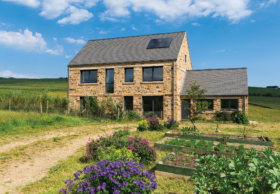
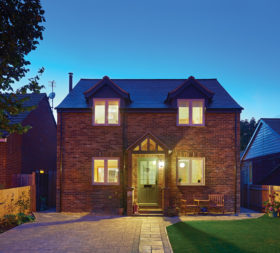






























































































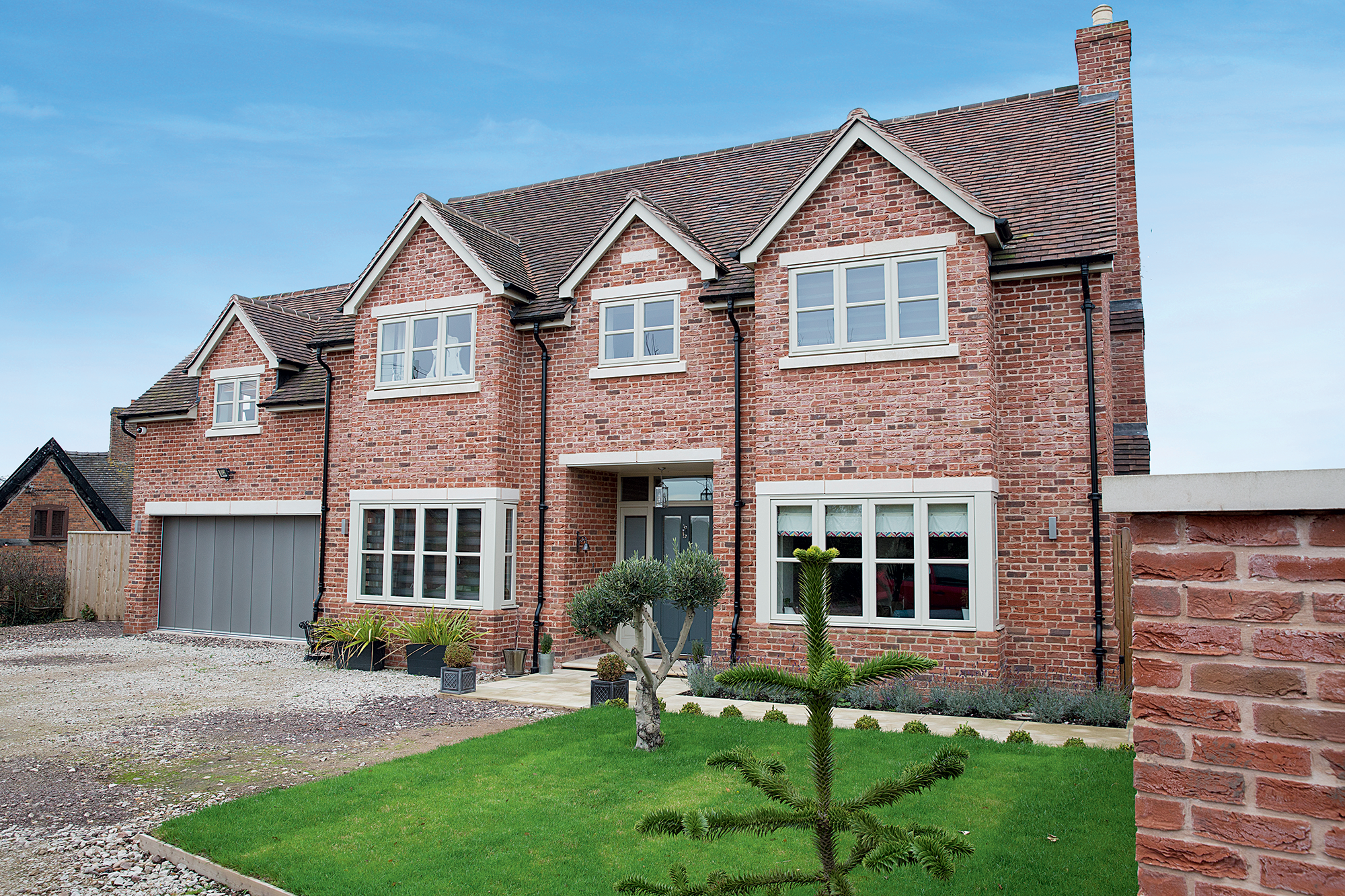
 Login/register to save Article for later
Login/register to save Article for later
